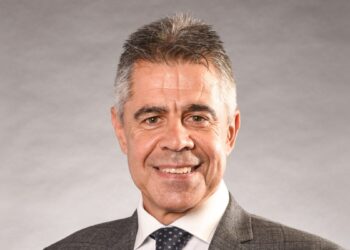It is known that any member of an SMSF departing Australia for an extended period or permanently may be faced with the fund failing the residency test. To be a complying superannuation fund and enjoy concessional tax treatment, an SMSF must satisfy the residency test at all times without exception.
In a recent online update, SuperConcepts technical executive manager Graeme Colley said that an SMSF must make sure of its compliance approach around residency, as failure to comply will create losses in concessional tax treatment and be taxed at 45 per cent. The higher tax rate will be levied on the investment income plus the market value of the assets less the amount of non-concessional contributions made to the fund.
When dealing with residency changes for a fund and members that are potentially leaving Australia, Mr Colley noted it is important that residency issues are addressed well in advance of the trustees leaving Australia.
This can affect making decisions about the trusteeship of the SMSF close to the time of departure, or after may be too late, as there are probably more important things that take priority.
“Even worse, the issues may not be discovered until the trustees have returned to Australia,” he said.
“The residency test is one that must be met ‘at all times’ and, once failed, cannot be rectified retrospectively, which may result in significant adverse tax consequences.
“Anyone planning to travel overseas, when it is possible, will need to consider whether the SMSF will continue to meet the residency test. If in doubt, professional advice is worthwhile prior to departure or it may be too late.”
When demonstrating residency, Mr Colley said a resident SMSF is required to meet the definition of an “Australian Superannuation Fund” which is in the income tax legislation and satisfies three requirements at all times. These are an establishment test, a control test and an active member test.
“The establishment test is met if the fund was established in Australia or an asset of the fund was situated in Australia. Nearly all SMSFs have a trust deed which was executed in Australia and will meet this test,” he said.
“The central management and control test relates to the strategic and high-level decision-making processes and activities that are undertaken by the trustee. This includes formulating and reviewing the fund’s investment strategy and monitoring investments.
“The day-to-day administrative activities of the fund do not come within the central management and control test. This would include the actual investment of fund assets, acceptance of contributions and payment of benefits.”
When meeting the central management and control test, the concept can be regarded as being “in Australia” even where the trustees may be overseas for a relatively short time, according to Mr Colley.
An example is temporary absence which can be for a period of no more than two years where the trustees may be on vacation or for employment.
“The current situation where a person is unable to return to Australia due to travel restrictions and the COVID-19 situation may still be considered a temporary absence, although the trustee may have been overseas for a longer period,” he said.
“Where all trustees emigrate to another country, the fund is likely not to meet the Australian superannuation fund test from the time of departure. In this situation, the trustees may need to resign and have new trustees, who have been granted enduring powers of attorney, appointed in their place.”
Meeting the active member test
In consideration of the third test to pass, Mr Colley said the active member test is the “sting in the tail” of the definition of Australian superannuation fund, as it applies where a member who is a non-resident for tax purposes may contribute or rollover to the fund and requires increased consideration.
“SMSFs are more likely to fall foul of this rule than larger super funds,” Mr Colley warned.
“Where contributions or rollovers have been made in respect of a fund member in a financial year, they are treated as an ‘active member’. To meet the active member test, at least 50 per cent of the fund balances of active members must relate to Australian residents for income tax purposes.”
Mr Colley said it is prudent that an SMSF should exercise caution when accepting contributions from members who are overseas and are not considered tax residents, unless the fund has tax resident active members who meet the 50 per cent rule.
“Some fund members may choose to have contributions made to a larger publicly available fund when they are overseas and do not qualify as Australian tax residents. Once they return to Australia and regain their tax resident status, they may roll over the benefit to the SMSF,” he said.
However, one possibility to retain the fund’s status as an Australian superannuation fund could be for the member to grant an enduring power of attorney to someone they trust to make decisions about the SMSF, according to Mr Colley.
Granting an EPOA to a person doesn’t give them the right to make decisions on behalf of the fund; however, the superannuation legislation does permit them to formally appoint and take the place of the trustee or director of the corporate trustee.
“When the central management and control is delegated to another person, it is important they undertake those responsibilities in their own right rather than under the influence of the grantor of the EPOA. If the replacement trustee passively accepts instructions from the grantor, the ATO has indicated that the central management and control test would not be met,” Mr Colley explained.
“A common option for a fund with two trustees both going overseas is for one of the existing trustees to grant an EPOA to a person who will remain in Australia. The grantor would then resign as trustee of the fund and be replaced by the Australian resident.
“If the SMSF has a corporate trustee, it is possible for the director to nominate an alternate trustee who is able to act as a director while the appointed director is overseas. This can be a simpler option to the granting of an EPOA and another’s benefit of having a company as trustee of the SMSF.”



Good article, however in terms of the establishment of a SMSF whilst a trustee is actually overseas, invoking the “2 year rule” for CC&M, as one of the 3 pillars – is this possible in the current climate where the borders are effectively closed, that you could establish a SMSF whilst 1 of the trustees are offshore but intend to be back in Australia within a 2 year period – assets are in Australia as is the other trustee ??